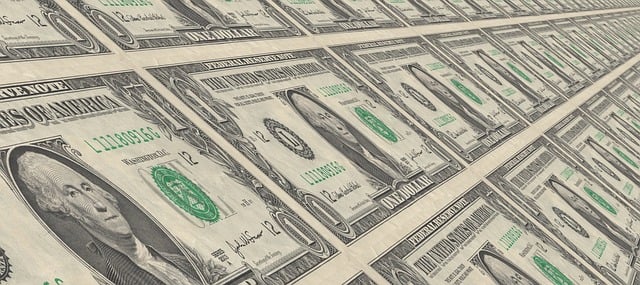
Economic Factors have you ever thought about why every country doesn’t simply use the same currency? It might seem more convenient—no need to exchange money or mentally calculate conversion rates while traveling. However, most countries maintain their own currency for a reason: each nation has its own economic conditions and wants the ability to make financial decisions that fit its unique needs. To grasp these decisions, it helps to understand why currencies differ in value and how those values fluctuate over time.
Currencies have varying worth.
A chocolate bar may cost $1 in the United States, but in Indonesia, it could be more than 14,000 rupiah. Does that mean chocolate is 14,000 times more expensive in Indonesia? Not exactly—when you convert rupiah to U.S. dollars, the price ends up being roughly equivalent.
Read more about Trendy gadgets
Read more about Different economic factors
So who determines a currency’s value? In some countries, it’s quite simple: they choose a widely used currency, often the U.S. dollar or the euro, and “peg” their own currency to it. For instance, Belize’s central bank has set its currency at half the value of a U.S. dollar. Currencies managed this way are called fixed or pegged. Countries often use pegging to ensure stability for investors, who prefer to avoid worrying about currency fluctuations. If a currency loses value, the worth of investments in that currency declines as well.
Graphic uses a steady arrow to represent fixed currency and a zig-zagging arrow to represent floating currency. For more info, contact cfr_education@cfr.org.
However, most exchange rates are not fixed—they “float,” meaning their value changes constantly based on different economic factors. As of June 2023, one U.S. dollar is roughly equal to eighty-two Indian rupees. Twelve years earlier, a dollar was worth fifty rupees. And over forty years ago, only eight rupees were needed for a dollar. Over time, the rupee has lost value, or depreciated, making it less valuable. A currency that depreciates is sometimes called “weaker” because it can buy less foreign currency. Conversely, the Israeli new shekel was valued at just nineteen U.S. cents in 2003, but by June 2023, it had risen to twenty-seven cents—a 42 percent increase. During this period, the shekel became stronger or appreciated, meaning it gained value.
Currencies are traded just like any other goods. These exchanges mainly occur in foreign exchange markets, which are platforms for buying and selling currencies. A currency’s value rises when many people want to purchase it (indicating strong demand) and falls when fewer people are interested in buying it (indicating weak demand). Similarly, if a large quantity of a currency is available in the market (high supply), its value tends to decrease, whereas if there is a limited amount (low supply), its value tends to increase. As you will see below, the supply and demand for a currency can shift due to various factors, such as a country’s appeal to investors, commodity prices, and inflation levels.
Countries with political and economic stability are often seen as appealing places for investment. The higher the level of interest from investors, the stronger that country’s currency tends to become. This occurs because foreign investors need to exchange their money for the local currency to make investments. For instance, a French investor aiming to buy South Korean stocks must obtain South Korean won, and this increased demand raises the value of the won.
Conversely, countries facing uncertainty usually struggle to attract investment. When investors are unsure about a nation’s prospects, the demand for its currency often declines. A clear example of this was the United Kingdom after the Brexit vote in 2016. Investors were uncertain about how leaving the European Union would impact the British economy, leading many to avoid investing, which caused the British pound to lose value.
Oil sales account for a significant portion of Canada’s economy. Therefore, if an international oil company wants to purchase Canadian oil, it must convert its own currency into Canadian dollars. When oil prices increase, the company must exchange more of its currency for Canadian dollars, which raises the demand for the Canadian dollar and strengthens its value. Conversely, when oil prices fall, foreign oil companies need to spend less of their currency to buy the same quantity of oil. This lowers the demand for Canadian dollars and causes its value to decrease.
Inflation refers to rising prices, which generally reduces the purchasing power of a country’s currency. When a nation experiences inflation, the cost of its exports goes up, making them less appealing to international buyers. At the same time, higher domestic prices may lead local consumers to buy cheaper goods from other countries, which requires exchanging their currency for foreign currencies. Both of these factors—lower foreign demand and increased currency supply in the market—tend to decrease the value of a currency.
Moderate inflation, such as a 1–2 percent annual increase in prices, is considered normal and can indicate a healthy economy. However, hyperinflation—an extreme and uncontrolled rise in prices—can severely weaken a country’s currency. For example, between 2008 and 2009, Zimbabwe experienced hyperinflation after the government printed excessive money to cover its massive debt while addressing a domestic food shortage. This caused prices to skyrocket, with inflation rates exceeding 100 billion percent.
Changes in a currency’s value create winners and losers. Producers benefit from a weaker currency because it makes their goods cheaper and more competitive abroad. Consumers, on the other hand, prefer a strong currency to get more value for their money. For instance, U.S. travelers gain when the dollar is strong, as foreign goods and services become more affordable.
Some countries prioritize benefiting particular groups. Japan, for example, relies heavily on exports, so a weaker yen makes Japanese products more affordable internationally. Conversely, most Americans prefer a strong dollar to access cheaper foreign goods.
Typically, the value of a currency is determined by market forces, like supply and demand. However, some countries have been accused of manipulating their currency to make it weaker, thereby boosting exports and helping domestic manufacturers.
Governments can influence currency values in several ways:
Encouraging domestic companies to invest abroad. Foreign investment requires the investor to convert money into the domestic currency, increasing demand and potentially raising its value.
Buying large amounts of another country’s currency, such as U.S. dollars to purchase U.S. Treasury securities. Higher demand for that currency can strengthen it by reducing its supply on the market.Flooding foreign exchange markets with their own currency or currencies held by their central bank, which increases supply, lowers demand, and reduces the currency’s value.
Most nations have their own currency, but there are exceptions. The euro is a prime example, used by twenty European countries. Sharing a currency simplifies travel, investment, and price comparisons across borders, eliminating the need for constant conversions. This benefits everyone: small European countries gain more investment opportunities, while larger ones enjoy easier access to markets. Over 340 million people use the euro daily.
A graphic illustrates that the European Central Bank manages interest rates, the euro money supply, banking regulations, and foreign currency reserves, while individual governments handle taxes, budgets, pensions, and similar matters. For further information, contact cfr_education@cfr.org.
Source: European Union; European Commission.
However, these advantages come with challenges. Eurozone countries relinquish control over monetary policy to the European Central Bank, which consists of representatives from each member nation. This means that countries cannot tailor policies to their specific economic conditions, such as variations in labor productivity. The eurozone’s success also depends heavily on trust: member states must believe that the European Central Bank will make choices benefiting all participants. Likewise, if one country experiences an economic crisis—like Greece in 2009—the impact can spread across the eurozone.
Due to these risks, it is unlikely that other regions will adopt a shared currency like the euro. For now, most of us traveling or investing internationally will continue exchanging money and monitoring currency fluctuations.
Interest rates are a key driver in the foreign exchange market. Set by central banks, they determine the return on holding or the cost of borrowing a currency. Currencies often appreciate when interest rates rise because higher returns attract foreign capital. For instance, when the US Federal Reserve increases rates, the US dollar typically strengthens against other currencies. On the flip side, lower interest rates can cause a currency to weaken as investors look for higher yields elsewhere.
Interest rates also affect domestic spending by consumers and businesses. Higher rates can reduce borrowing and spending, slowing economic growth, yet they can also make a currency more appealing to international investors seeking higher returns on bonds and other fixed-income assets. This can result in a situation where economic activity slows domestically, but the currency gains value due to foreign inflows. Conversely, lowering interest rates encourages borrowing and spending, boosting growth, which may weaken the currency as capital moves abroad in search of better returns.
Even the anticipation of future rate changes can influence exchange rates. If markets expect a central bank to raise rates, the currency might strengthen before the increase is officially implemented. This effect is common in forex markets, where expectations and speculation play a major role in determining current exchange rates.
Inflation levels are closely tracked by central banks, which adjust interest rates to maintain stable prices, typically around 2%. Low inflation tends to boost a currency’s value by increasing purchasing power. For example, a lower inflation rate in the US can make the dollar more attractive as goods become cheaper for foreign buyers. However, the connection is nuanced, and extreme situations like deflation can produce different outcomes. The link between inflation, currency strength, and economic health depends on many factors beyond inflation alone.
High inflation, on the other hand, can weaken a currency by reducing its purchasing power and discouraging investment. It may also increase borrowing costs and slow economic growth. That said, the relationship is not always straightforward—global conditions, comparative inflation rates, and other economic variables can alter the effect. In some instances, moderate inflation can encourage spending and investment, whereas strong growth or high interest rates may counteract the negative impact of elevated inflation on a currency.
Employment levels are another important determinant of currency value. Central banks strive to keep unemployment low to ensure economic stability. Rising unemployment can weaken a currency by signaling economic difficulties and lowering investor confidence. High unemployment reduces consumer spending, which slows overall economic activity and can further depress the currency.
Conversely, a healthy labor market can strengthen a nation’s currency by demonstrating economic resilience. Low unemployment is often associated with higher consumer demand and spending, which stimulates growth. Additionally, a strong job market can lead to wage increases, boosting consumer confidence and further supporting economic expansion. Countries with low unemployment usually see stronger domestic demand and production, attracting foreign investment and bolstering currency value.
It’s essential to recognize that unemployment’s impact on currency is interconnected with other factors like inflation. Central banks must carefully balance these elements when formulating policies that influence both employment levels and currency strength.




